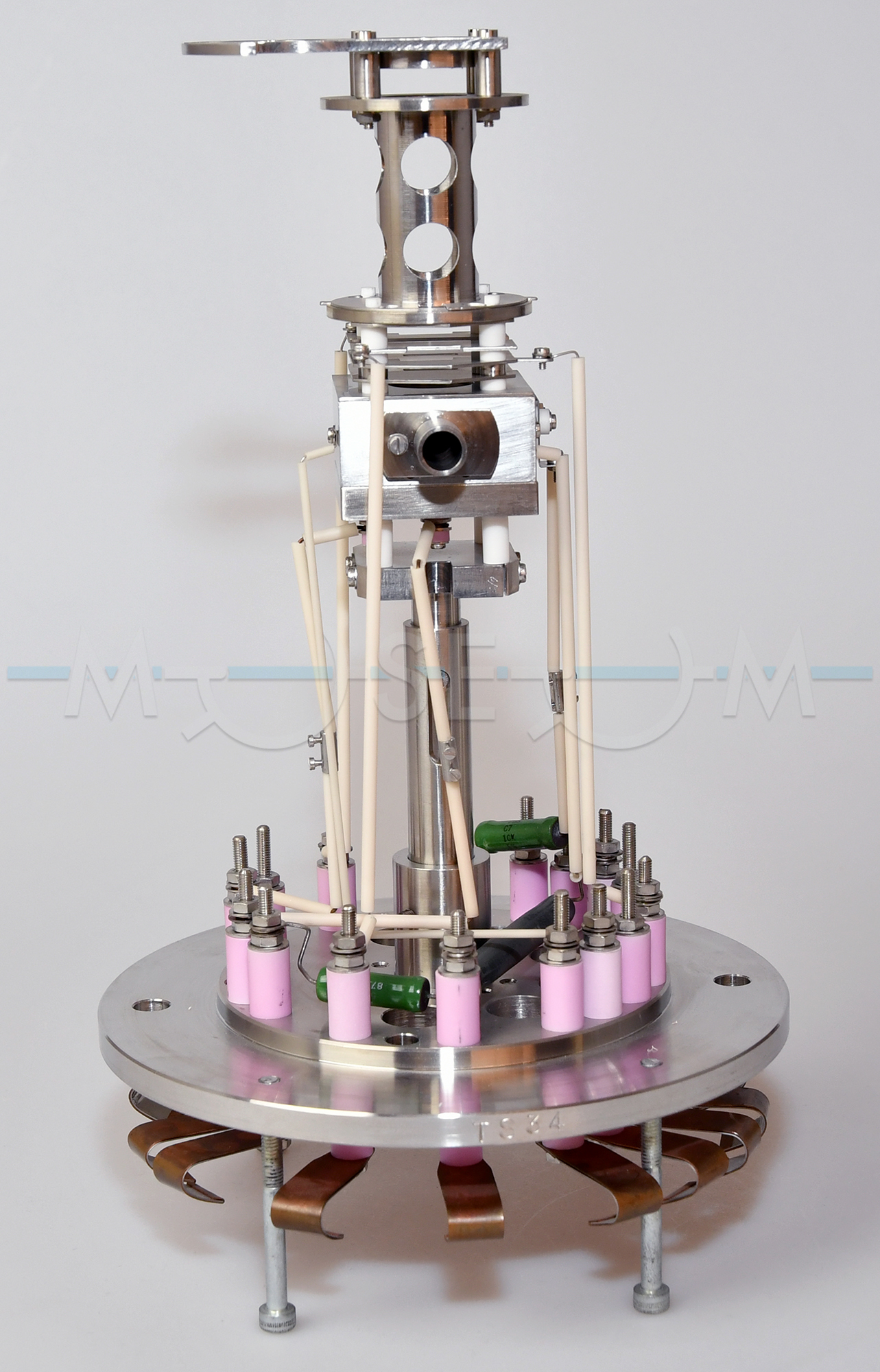Categories of exhibits
Thermospray/Plasmaspray
Exhibit no. 890
Thermospray ionization (TSP) was one of the successful methods for direct LC/MS coupling in the pre-electrospray era. In TSP, a solution containing volatile buffer like ammonium acetate was evaporated from a heated capillary into a heated chamber. The sample solution quickly vaporized, resulting in a spray of small droplets. As the solvent evaporated, the analytes formed adducts with ions from the buffer salt. To measure the spectra, a standard EI/CI ion source had to be replaced by a thermospray source.
The exhibit is a combined thermospray/plasmaspray ion source assembly for a sector mass spectrometer ZAB EQ manufactured by VG Analytical, Ltd. in 1986. It consists of a round mounting plate with a supporting shaft. Copper clad steel springs around the circumference of the plate mated with feedthroughs in the source housing cover plate. A block plate at the upper end of the shaft holds the ion source plates and slits separated by ceramic spacers, and other elements including the heater. A dedicated thermospray/plasmaspray probe was used to introduce the sample. The liquid sample passed through a capillary tube, which was directly heated by an electric current. An expanding supersonic jet of vapor and droplets emerged from the capillary. The pumping line in the thermospray chamber removed excess solvent and the ions passed through the orifice in a sampling cone. The ion source could also operate in a plasmaspray mode. It was achieved by initiating a glow discharge inside the ion source, using the thermospray probe tip as an electrode (approximately -600 V relative to the source block). In contrast to the thermospray, the plasmaspray mode made it possible to use low polarity solvents and buffer-free solutions.





